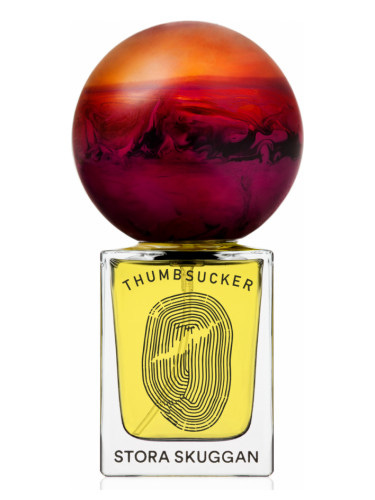It is very difficult to answer the question, ‘What makes a perfume good?’ The much easier question to answer is, ‘What kind of perfume do you like?’
Fragrance, like most art forms, is predominantly subjective. So forget about what’s good and tell me, what kind of perfume do you like? Do you like a smoky perfume that smells like the seats the back of a jazz club, or a perfume that is bitter and sharp like the first blooming flowers of spring? Do you like a perfume that is full and complicated, or light and spare? What is the smell that keeps you up at night, makes you hungry for more? What is the scent that haunts you?
The art of perfume is the art of contrast. Accords and notes are added to a formula like the instruments in an orchestra to construct a whole, but they are not always in harmony. Many great perfumes contain at least one note - the isobutyl quinoline that whips across Bandit; the chthonic patchouli that lurks in the bottom of Angel - that is discordant with the whole. These are not flaws but features, the contrast that makes everything feel more vivid and present.
In the Silmarillion, Tolkien’s great legendarium, the gods weave a song that creates the earth. One of the gods, Melkor, starts to create his own tune that is out of sync with the rest and through this creates the first threads of evil in the world. This has parallels with many great real world mythologies - Prometheus and Pandora, Adam and Eve, Anansi, Maui. These stories exist because we know there is evil in the world and it is comforting to believe that there is a design to it. Life is violent; the heart has many hidden corners; the world has a space reserved for deep, deep evil. And yet it is our world and we must try to understand it.
In our world there are perfumes that are constructed to disturb and others designed to comfort. There are perfumes designed to be utterly seamless and others made of nothing but jagged edges. All of these structures have merit - there is no correct way to build a perfume. But I have a special fondness for perfumes that have that one note of discord, the single instrument out of tune that somehow becomes the centre of the entire symphony.
For this week’s article I want to talk about perfumes that have that thread of discord woven into them, perfumes that challenge our concepts of what art and beauty and perfume can be.
We are the children of Pandora and sometimes it’s good to be unsettled.
Fahrenheit
I am reliably told, though I can scarcely believe it, that many people do not enjoy the smell of gasoline.
I suppose it’s kind of like people who can curl their tongue, or who think coriander tastes like soap: you’ve either got the gene or you don’t. What I can say is that life is good when you like the smell of petrol and wet paint and car oil, the smell of white-out and hot glue and sharpie tips. It’s a beautifully phenolic, turnpenic world out there and I’m sniffing it wherever I can.
The primary chemical that gives petrol its scent is benzene, which is now a known carcinogen that is heavily restricted for use in fragrance. But no matter: the unforgettably thick, oily, acrid, slightly sweet smell of petrol is such a strong scent memory for pretty much anyone who has ever smelled it that it is relatively easy to reference in perfume using other means.
In the realm of petrol perfumes the one that stands giant above them all is Fahrenheit.
This 1988 behemoth from Dior is one of those perfumes that you really must smell before you die. It is a scent that exploded into the world and redefined what a fougere and a masculine branded perfume could be. Though the current formulations are naturally not the same as the original, good old Fahrenheit is still in pretty good form and worth a spray at your local counter (though purists will direct you to the Parfum version for a closer match to the original formula).
Fahrenheit takes the traditional fougere structure of lavender-coumarin-oakmoss and chucks a simply enormous violet leaf and leather accord over the top. What you get is a traditional dry barbershop scent that has had a car with flaming wheels drive right through it.
When I smell Fahrenheit I can’t help but think of leather jacket wearing troublemakers, like the cast of the Outsiders, men who ride bikes and are almost performing their anger at society like a bizarre masculine ritual. Fahrenheit has heavy brows, wide shoulders, slick hair, and a cigarette dangling from its mouth that seems to be there purely for effect.
There are about a hundred listed notes for Fahrenheit and it makes no sense to wander through them all. The most prominent of the lot is the violet leaf, which is the center of the gasoline accord that forms the main thread of the scent.
Violet leaf is really one of those miraculous notes in perfumery that can never be explored in enough depth. It is harsh, confronting, ozonic and watery in almost a cucumber way - but it can also have a gentler side, playing well with soft florals and powdery notes. It is used with typical 80’s bombast here, allowed to draw all the other notes into its electric blue-purple orbit. It bridges the leather notes with the florals with the usual fougere notes, all of it somehow working. How is anyone’s guess. But it works.
The other remarkable thing about Fahrenheit is how dry it is. I love a dry perfume, a perfume that scrapes like sandpaper on your palate, and everything in this perfume is so abrasive and scratchy without ever losing its fullness. Smelling it now gives me the same thrill I got when I would twist the lids to sniff permanent markers as a child: that frisson of smelling something you shouldn’t, something dangerous, that somehow makes the scent all the sweeter.
I can only imagine how this perfume exploded into the market in the 1980’s: Mad Max in a bottle. Though I wasn’t alive at the time, I find myself nostalgic for 1980’s Dior. Has there ever been two perfumes as perfect in name, formulation, bottle style and marketing as Fahrenheit and Poison? As fragrances they each embody that deregulated opulence that made the 80’s so wonderful and so terrible.
It’s a good thing that Fahrenheit exists in the world. Its totmeic black-ember bottle serves as a safe haven for all of us junkies who sometimes crave that pungency of gasoline but prefer our danger to stay theoretical. Wear with a leather jacket and a bad attitude.
Thumbsucker
I won’t lie to you: Thumbsucker is hard work. The first time I smelled it, in the gluttonous fugue state I always fall into when a new sample order arrives, I sprayed it and then immediately set the blotter aside muttering ‘I cannot handle you right now.’
The scent is one of a handful from Swedish niche firm Stora Skuggan. Their site is as hilariously brusque as you would want a Nordic brand to be (“Are your perfumes ecological? - No, ecological doesn't really make sense in perfumery.”), and they lean more art house than masstige.
I always want to love Stora Skuggan scents because their bottles are divine. Each one is topped by a gigantic round bauble, like a tiny planet or a bowling ball. I feel like I need one, spiritually, to liven up my perfume tray. Their scents toe the line between edgy and approachable, similar to other art-niche houses like Jorum Studio and Nasomatto.
As a self identifying almond/cherry perfume lover it was Thumbsucker that most intrigued me from the brand’s lineup (with Pine trailing a close second). I was hoping for a punchy, zippy pseudo-cyanide scent. What came out of the sprayer was something else entirely: a honey perfume.
There are some materials that don’t translate into perfumery with any sense of realism. Nutmeg is one - I sometimes spray perfume with a nutmeg note listed on my wrist and then go to my kitchen and sniff at the powdered nutmeg in my spice cabinet to try and make any kind of connection (no joy). There are a lot of food notes and accords in the world of perfume that are like this: sad, uncanny valley versions of their culinary counterparts.
Honey, unfortunately, is one of them.
There’s nothing in the world that smells quite like honey. Sweet to the point of saccharine, resinous, rich and deeply animalic, it’s the definition of an acquired taste. I love the aroma of real honey, but somehow the honey in fragrance products always smells like a demented zombie version of the real thing.
The perfumer’s honey is thick, powdery, musky, animalic to the point of fecal, and strangely lactonic, like sweet curdled milk. It has a fattiness that is more akin to beeswax than the honey that we eat. A honey perfume always has my shoulders raised in preparation for that dusty, old attic and mothballs smell - this is why I really can’t handle Bee (Zoologist, 2019).
It seems insane to say, but I find honey more confronting as an animalic than overpowering notes like civet and castoreum (and it doesn’t even have one of those sad little animal pictures for its note icon on fragrantica). There is something so deeply wrong about it to my nose. It’s a note I should enjoy - full and rich and complex - but it feels sickening instead of opulent, like a film on the back of your palate that you can’t rinse off.
All of this went zipping unpleasantly through my head as I breathed in Thumbsucker. The honey in this perfume has a room-filling quality, as if it is suffocating you with a fine, dense powder that inflates like helium in a balloon. The powdery, animalic nature of the perfume reminds one of used underwear in the unsexy, laundry hamper sense.
The honey never really settles down, but after a while you can start to tune it out to concentrate on everything else going on here. And the perfume is busy: there’s a honey-hued narcissus and medicinal cherry-violet bouncing around, all adding to the powderiness of the scent.
This is a huge, endless perfume that will cling on to the blotter for a week if you let it linger around your house. I do this every so often, like an inoculation - I want to build up my tolerance to Thumbsucker, to understand it. It is a cleverly made perfume, a thick fug that never once feels trite or boringly synthetic.
If you like honey, thick flowers, and distressing animalics, seek it with all haste. If you like none of these things, seek it out at a measured pace.
Dirty Peach
I mostly have separate accounts on social media for perfume content because I like to pretend I control my algorithm as opposed to it controlling me. My ‘normal’ feeds are filled with my other interests. This includes a lot of content about alternative fashion and music, because a part of me will always be the box dye black haired goth I was when I was fourteen years old.
So it was quite the shock to me when, about six months ago, every one of my favourite goth content creators started talking about the exact same perfume.
The scent in question was Heretic’s tie in for the film Nosferatu, and I have to admit that the film and brand’s marketing teams certainly know their audience. There is no perfume brand better suited to the goth weirdos of the world than Heretic (besides the standard dabber bottle witch-adjacent Etsy oil houses, which are also very popular with goths the internet over).
Heretic and I go back to 2017 when I sought out their collaboration with Dita von Teese called Scandalwood. (It’s fine, by the way - a quiet perfume that’s a little boring). I’ll occasionally order a batch of samples for their new releases, as they are a well priced and well branded line that I have a gut feeling will one day make a perfume that I love.
Heretic uses ‘100% natural or naturally-derived ingredients’, which I assume means they’re isolating their damascenone from anise oil and so on. Their perfumes don’t have that funky back-shed feeling that a lot of natural houses give, which is a credit to perfumer Douglas Little’s skill. The scents appeal to the ‘clean beauty’ crowd because of this, and the goth crowd because the brand’s aesthetic is spooky as hell. The result is a brand that’s not too highly priced, artisan, and just delightfully witchy enough that they’re a rare brand you really do feel good about supporting.
Heretic takes a Tom Ford approach to nomenclature with perfumes named Florgasm and Flower Porn and Dirty Fig. In fact, there’s a whole lot of dirties at Heretic: Dirty Vanilla, Dirty Coconut, Dirty Hinoki, Dirty Grass… there is no unifying note or theme to any of these perfumes, they just seem to be Little’s take on any given note or theme.
Enter Dirty Peach. This perfume is intriguingly labeled ‘96% natural as defined by ISO 9235 – Natural Aromatic Raw Materials Vocabulary’ on Heretic’s website. With styling that is delightfully retro and a description that evokes the ‘first days of summer’, the scent seems to be aiming at the usual market for fruity scents.
There are a lot of fruity perfumes in the world but there aren’t very many great ones. There’s something about a realistic fruit note that doesn’t speak to the sophistication or skill it takes to create them - they will always remind the smeller of a body spray they either wore or smelled when they were a teenager.
Dirty Peach does not void this. Instead the scent leans in to those juvenile scent associations by rendering what is, to my nose, the most realistic sour peach candy accord I have ever smelled. Getting my first whiff of this threw me back to the old school cinemas I went to as child that had the colourful wall of choose-your-own candy that was too expensive to actually buy but was very fun to stare longingly at as you marched toward your movie. The plasticky smell of ultra processed candy is here too, enhancing the fuzzy punch of the peach.
Stone fruits are interesting playgrounds in the world of perfume. They have an initial citrus-like scent but then get very weird and complex, with a sour tartness that balances with a lactonic smell that is, disturbingly, a little creamy. The tart-creamy scent of peach plays well with white florals, smelled notoriously in Rush (Gucci, 1999), and there are echoes of this in Dirty Peach’s white floral heart. It’s all feeling very pretty, very fruity-floral, and in a typical designer scent would probably dry down to a nondescript musky nothing.
That’s where Dirty Peach gets really weird and really interesting.
The base note of this perfume smells like what I can only describe as hot asphalt. There are days in summer where it feels like you are baking in the open and the neighborhoods of your city become a kind of urban hell. The seat of your car burns the backs of your thighs; the air shimmers with heat like a mirage in the desert; the pavement underneath your feet feels hot enough to fry an egg. In the city that kind of heat has its own smell, the smell of hot rubber, the smell of melting tyres and blown fuses, and it is that smell that is churning at the bottom of Dirty Peach.
One reviewer on Heretic’s website calls this scent JUICY HOT WITCH SUMMER and another calls it FUN FRUITY CAT PEE. Both are correct. Maybe the the rarest thing a perfume can be is fun, so it’s always nice to smell one that is a little tongue-in-cheek. It’s double as unexpected because cleverness is not something I usually expect to find from Heretic. Their interpretations are often boorishly straightforward - Little has created a whole line of marijuana themed scents, as if the smell of weed isn’t one of the worst things on the planet - which makes Dirty Peach all the more remarkable.
There are many ways a perfume can play with common structures and expectations of the industry. When a brand becomes established enough, they can add to this subversion by changing their own house style as well. No matter how long I love perfume or how much I smell, I am always reminded that you can’t discount any perfume because of its brand, name, notes list, reviews, or presentation.
The only true judge is your nose - trust no other. ▣










I also have a hard time with honey notes and usually find them to be cloying to the point of nauseating (looking at you, Bee). But I'm curious if you've smelled Francesca Bianchi's The Dark Side? It has a gorgeous honey note that I find to be resinous, rich, and dramatic.
your filmy description of thumbsucker is spot on. my first thought was that it smells a little like the way your mouth tastes when you're sick & you take cough syrup right after you had a honey drop -- i'm almost nervous to actually try wearing it.